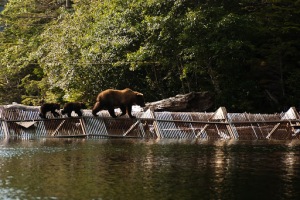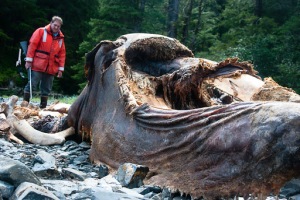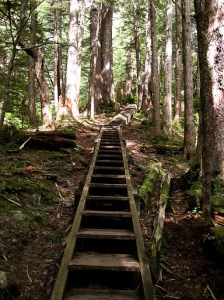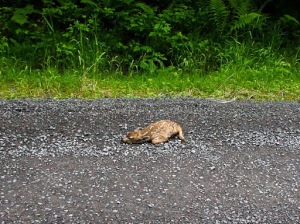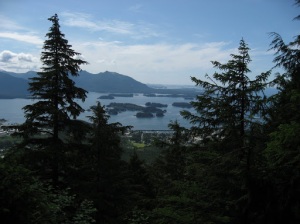Dead Whale Tales
On our way to Redoubt Lake, we made a little detour to check out this dead whale. It was a gray whale, which died and washed up in March or so. It originally washed up closer to the town of Sitka, but was towed to this location, further from people’s houses.
 As you can tell, it has been dead for some time and is an advanced state of decomposition. Large portions of it had melted into piles of goo. As you might imagine, it smelled terrible!
As you can tell, it has been dead for some time and is an advanced state of decomposition. Large portions of it had melted into piles of goo. As you might imagine, it smelled terrible!

But if you think that’s gross, imagine this image. The fellow we were with said when they cut it open for the necropsy, they unleashed a veritable river of blood. And one of my Forest Service supervisors told me he was once involved in towing a whale corpse from one location to another. When they approached that one in the boat, first, he said you started gagging a quarter of a mile away, and, second, they could see bubbles in the water, from gases escaping out of the blowhole. Yum!
Since it’s a giant smelly pile of meat, maybe you guessed that a whale carcass is a the sort of thing that attracts bears. In fact, the attraction is so well know that earlier in the year there were hunters who came out and shot a brown bear. You can see the bear’s skeleton in the foreground; the hunters only took the head with them. You can also see that Joe’s carrying his rifle in case any other bears come by for a snack.
Perhaps that unlucky bear was the one spotted in June by folks who went on a boat tour with the Sitka Conservation Society.
